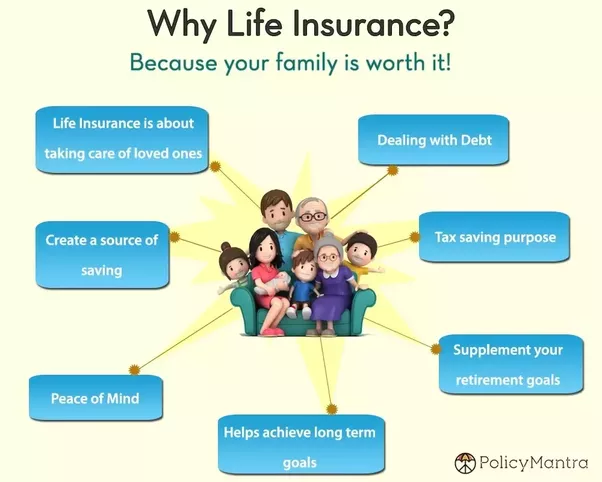Not known Factual Statements About Pacific Prime
Not known Factual Statements About Pacific Prime
Blog Article
The smart Trick of Pacific Prime That Nobody is Discussing
Table of ContentsIndicators on Pacific Prime You Should KnowPacific Prime Fundamentals ExplainedNot known Incorrect Statements About Pacific Prime Our Pacific Prime Statements
In the majority of states, the insurance provider is needed to send you a copy of the modifications to your policy. It is crucial that you review Recommendations or Cyclists so you recognize just how your plan has actually transformed and if the plan is still ample to fulfill your needs. To get a copy of your insurance plan, please contact your insurance policy representative or firm.
The Institute of Medication (IOM) Board on the Consequences of Uninsurance launches an extensive examination of proof that addresses the value of health and wellness insurance policy coverage with the publication of this record. Insurance coverage Issues is the very first in a series of 6 records that will be issued over the following 2 years recording the truth and repercussions of having an approximated 40 million people in the United States without medical insurance protection.

Pacific Prime Can Be Fun For Everyone
The goal of this collection of studies is to refocus plan focus on a longstanding issue. Adhering to the lengthiest economic expansion in American history, in 1999, an approximated one out of every 6 Americans32 million adults under the age of 65 and greater than 10 million childrenremains without insurance (Mills, 2000).

Ten percent of the population make up 70 percent of health care expenditures, a relationship that has stayed consistent over the previous 3 decades (Berk and Monheit, 2001) - maternity insurance for expats. Thus health and wellness insurance policy remains to serve the function of spreading out risk even as it increasingly finances routine care. From the point of view of healthcare companies, insurance lugged by their clients helps protect an income stream, and neighborhoods gain from monetarily viable and secure healthcare specialists and organizations
Federal government offers medical insurance to populations whom the personal market might not serve efficiently, such as handicapped and elderly individuals, and populaces whose accessibility to health and wellness treatment is socially valued, such as youngsters and expectant ladies. The supreme ends of health and wellness insurance coverage for the specific and neighborhoods, including workplace communities of employees and companies, are boosted wellness end results and high quality of life.
Not known Details About Pacific Prime
Employees rate medical insurance initially by far in official statement relevance amongst all the advantages used in the work environment (Salisbury, 2001). There have been substantial investments of individual and public funds to give health and wellness insurance policy, numerous individuals still have no insurance coverage. Despite considerable reporting of study findings and wellness care research study results, the public remains baffled and mistaken about Americans without wellness insurance and the ramifications of lacking coverage.

Without concern, the intricacy of American healthcare financing devices and the wealth of sources of info contribute to the general public's confusion and uncertainty about health and wellness insurance policy data and their analysis. This record and those that will follow purpose to boil down and offer in easily easy to understand terms the substantial research that bears upon inquiries of health and wellness insurance coverage and its significance.
Fifty-seven percent of Americans questioned in 1999 thought that those without medical insurance are "able to get the care they require from physicians and medical facilities" (Blendon et al., 1999, p. 207). In 1993, when national attention was focused on the problems of the without insurance and on pending healthcare legislation, simply 43 percent of those polled held this idea (Blendon et al., 1999).

They additionally get less preventive services and are much less likely to have regular treatment for persistent problems such as high blood pressure and diabetic issues. Chronic conditions can lead to pricey and disabling difficulties if they are not well handled (Lurie et al., 1984; Lurie et al., 1986; Ayanian et al., 2000). One nationwide study asked greater than 3,400 adults regarding 15 extremely serious or morbid conditions.
The smart Trick of Pacific Prime That Nobody is Discussing
Added proof exists later on in this phase in the discussion of insurance coverage and accessibility to healthcare. https://www.openstreetmap.org/user/pacificpr1me. Individuals without medical insurance are young and healthy and choose to go without protection. Practically half (43 percent) of those evaluated in 2000 thought that people without wellness insurance policy are more most likely to have health and wellness issues than people with insurance policy
Voters and policy manufacturers in emphasis group conversations characterize those without insurance coverage as youngsters who have the possibility to be covered and feel they do not require it (Porter Novelli, 2001). Contrasted to those with at least some private coverage, the uninsured are less most likely to report being in exceptional or very great health and wellness (Agency for Medical Care Research and Quality, 2001).
RESOURCE: Center for Expense and Financing Studies, Company for Medical Care Research and Quality, based on MEPS data. Young adults between 19 and 34 are much more most likely to do not have health insurance than any kind of other age group. This is mainly since they are much less commonly qualified for employment-based insurance policy as a result of the nature of their work or their short tenure in it.
The perception that individuals without insurance have better-than-average health and wellness adheres to from perplexing the fairly young age profile of the uninsured with the better health, typically, of younger persons. This obscures the link in between health status and wellness insurance policy. For those without accessibility to work environment wellness insurance policy, inadequate health is a prospective obstacle to acquiring nongroup protection since such insurance coverage might be extremely valued, exclude preexisting problems, or be merely inaccessible.
Report this page